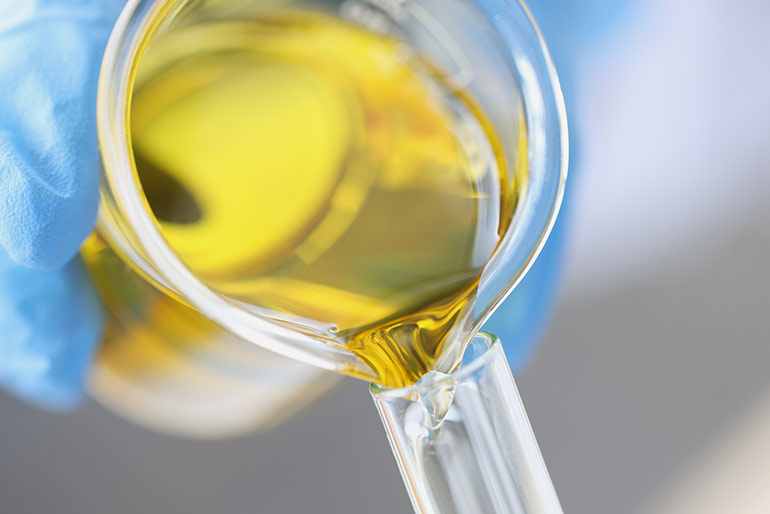By Josh Cosford, Contributing Editor
In part 5 of this series covering hydraulic oil analysis, we move on to discuss acidity. As it pertains to hydraulic oil, we need to know the total amount of acidic substances found within the sample. Most commonly referred to as the Total Acid Number, or TAN for short, the lab will test the oil to tell you how overall acidic your oil is.

A higher TAN indicates the presence of more acidic compounds, which can result from oxidation, contamination, or the degradation of oil additives. Elevated TAN values can lead to corrosion, increased wear, and potential damage to internal components. Regular monitoring of TAN helps assess the oil’s condition, age, and effectiveness since a poor result in this test may also mean your additive package is depleted and oil viscosity is increasing.
The source of acid could be one or more of many. Acidic organic compounds may have resulted from excessive heat and oxidation, fuel contamination may create sulfuric acid, and degraded phosphate ester may result in phosphoric acid, which is no surprise.
Acid can also be created within the oil itself, as temperature-related oxidation can lead to the formation of carboxylic acid. When you throw water contamination into the mix, hydrolysis may lead to the formation of organic acids, especially with synthetic fluids. And perhaps most (or least) surprisingly, microbial growth may lead to acidic metabolic byproducts, especially with water-based fluids.
No matter the source, you must not confuse the acid number with pH, which is more of an expression of oil’s corrosiveness, while the acid number describes the actual level of acidic levels in your oil. If your heavy equipment mechanic spilled his Mike’s Hard Lemonade in the reservoir during his Friday afternoon shift on a long weekend, you can expect your TAN to increase accordingly.
If not measuring pH, how do we measure the Total Acid Number? TAN is a proxy measurement done by adding a base until all the acids have been neutralized. The most commonly used base is potassium hydroxide, which is titrated gradually, and then the final calculation is based upon the amount of chemical used to neutralize the acid.
The lab’s test result tells you how many milligrams of potassium hydroxide (KOH) are needed to neutralize one gram of sample oil, and the unit is expressed as mg of KOH/g. For example, your test sample may come back with the number 0.5 mg of KOH/g; you may not worry much unless the result is 1.0 or higher, depending on the type of hydraulic fluid. With their expertise, your test lab will advise you if the result is concerning, providing you with the guidance and support you need.
Unless extremely excessive, the measurement trend is more important than the absolute amount. If the concentration of acids increases with every sample interval, then you need to address it through various methods, depending on the source of the acid.
In most cases, especially with old oil, replacing depleted additives can improve oil quality and reduce acidity. If your machine’s reservoir is small, just changing your oil makes the most sense. However, for vast reservoirs with high oil volume (which can cost many thousands of dollars to replace), you can contact your fluid provider to help you replenish additives.
Filed Under: Components Oil Coolers, Engineering Basics, Featured, Fluids, Sealing & Contamination Control Tips, Technologies